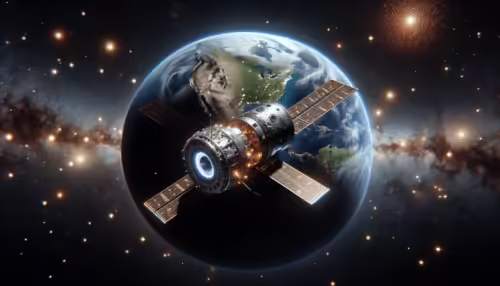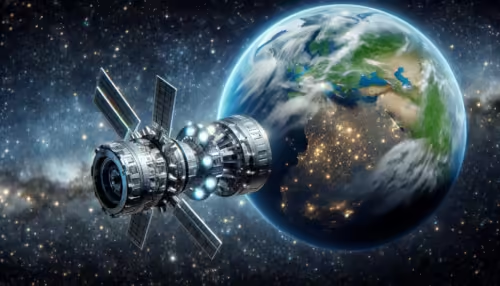What drives some of the most ambitious environmental projects at the European Space Agency (ESA)? As we peer into the vastness of space, the ESA has taken on the vital task of promoting clean space initiatives to balance the exploration and sustainability of that boundless frontier. Through this analysis, we aim to provide a comprehensive overview of the European Space Agency’s clean space initiatives, understanding both their significance and the various dimensions at play.
Clean space is a term that denotes the responsible management of space debris and environmental sustainability in outer space activities. Its importance stems from the need to protect future space missions and the environment of space itself. In our modern age, where technology paves the road into the cosmos, ESA’s clean space initiative acts as a compass ensuring that this journey is conducted with responsibility and forethought.
Table of Contents
A Historical Overview of the European Space Agency
In the heart of this discussion lies the European Space Agency, a formidable presence in the realm of space exploration since its founding in 1975. With over four decades of advancements, ESA has continuously pushed the boundaries of what is possible. Established to foster the coordination of Europe’s space activities, ESA’s history is marked by unprecedented collaborations and groundbreaking missions.
ESA’s resolve to enhance orbital sustainability is well-rooted in its historical context, finding its early voice in missions like Rosetta and Mars Express. These undertakings not only expanded humanity’s reach into the universe but also set the stage for incorporating environmental considerations in space missions.
Current Trends and Technological Advancements
In response to the ever-growing space debris challenge, ESA has embarked on a mission to develop innovative, effective solutions. This includes promoting the implementation of novel technologies designed to avoid the creation of space debris, as well as techniques for active debris removal. These trends demonstrate ESA’s commitment to ensuring the safety and sustainability of space activities.
Several flagship programs are central to this initiative. Consider the ambitious Space Debris Removal mission, which actively pursues technologies to capture and mitigate space debris. By adopting advanced solutions like the use of robotic arms for capturing debris, ESA is demonstrating a command of cutting-edge technology designed to safeguard future exploratory missions.

This image is property of images.pexels.com.
Defining Clean Space Initiatives
The clean space initiatives revolve around minimizing the environmental impact of space missions, primarily focusing on the prevention and remediation of debris in the Earth’s orbit. This involves a composite set of strategies aimed at different facets of space operation and maintenance.
Key Components of Clean Space Initiatives
Design for Demise: One of the cornerstone principles involves designing spacecraft so they burn up upon re-entry to the Earth’s atmosphere, minimizing potential risk to life on Earth and reducing space debris.
Active Debris Removal: This strategy encompasses a series of technologies designed to actively capture and remove existing space debris. The advancement in robotics plays a crucial role in executing these operations efficiently.
End-of-Life Protocols: By developing stringent guidelines for decommissioning aging satellites, ESA ensures that these measures are effectively reducing the residual risks associated with defunct satellites remaining in orbit.

This image is property of images.pexels.com.
In-depth Examination: Case Studies
Let’s further understand ESA’s impact through notable case studies that illustrate the core activities and themes associated with clean space initiatives.
Example 1: The ESA’s ClearSpace-1 Mission
ESA’s ClearSpace-1 mission is a pivotal project in their active debris removal endeavors. Scheduled for launch within the next few years, this mission will be the first to remove a sizeable piece of orbital debris. It aims to capture the remains of a Vega rocket removed with a unique chaser equipped with robotic arms. This ambitious endeavor seeks not only to mitigate existing debris but also to develop scalable solutions for future space debris challenges.
Example 2: Deployment of the CleanSat Project
CleanSat is an ESA-driven initiative focusing on setting the standards for future satellite designs to minimize the risk of in-orbit failures, which traditionally contribute significantly to the space debris problem. By proactively incorporating de-orbiting mechanisms, CleanSat ensures that future missions will adhere to low-impact environmental norms, setting a precedent for other agencies in the fields of operational efficiency and sustainability.

This image is property of images.pexels.com.
Comparative Analysis: Differing Approaches to Space Sustainability
In assessing various global approaches, we observe unique methodologies undertaken by space-faring nations alongside ESA’s initiatives, painting a diverse picture of international cooperation and effort toward a common goal.
| Aspect | ESA | NASA | Roscosmos | ISRO | JAXA |
|---|---|---|---|---|---|
| Debris Removal Techniques | Active debris removal with sophisticated robotics | Pursuit of similar approaches with an emphasis on autonomous systems | Focused on designing safer and more predictable long-term missions | Emphasizes high-reliability in spacecraft operations | Utilizes advanced satellite technologies to reduce debris creation |
| International Collaboration | Actively collaborates with other agencies | Collaboration through international coalitions like IADC | Engages in bilateral agreements | Primarily self-reliant with selective partnerships | Focuses on regional cooperation in Asia |
| Initiative Leadership | Advocates for comprehensive debris management | Utilizes leadership in technology development programs | Leads in traditional rocket design and mission execution | Champions cost-effective mission planning | Innovates through cutting-edge technology deployment |
These comparisons underscore not only the shared goals these agencies possess but also highlight the unique expertise each brings to the table, creating a broad spectrum of strategies encompassing global efforts to reduce space pollution.

Assessing Impacts and Consequences
The impact of ESA’s clean space initiatives stretches beyond technical achievements, signaling a shift in how space activities are regulated to contribute to overall environmental safety. By actively advocating for policy changes and forging international coalitions, ESA leads the charge in establishing a globally recognized set of guidelines centered on space sustainability.
Moreover, the implementation of ESA’s clean space initiatives substantiates their potential to propel space technology into a paradigm where sustainability is non-negotiable. This underscores not only the vitality of their ongoing efforts but also elevates the importance of continued research and application.

Future Directions and Projections
Looking to the horizon, ESA intends to further fortify its clean space narrative by continuing to innovate and iterate upon their solutions. Future projections include the expanded use of autonomous systems for debris monitoring and removal. Anticipated advancements will lead to a new epoch of space exploration characterized by prudent management and enhanced international cooperation.
Implications for the Space Industry and Society
The implications of these trends are monumental, laying a groundwork where space exploration can flourish devoid of ecological degradation. Greater societal recognition of the necessity for sustainable practices in space signals a critical pivot towards integrating conscientious measures into industry practices. As space activity intensifies, such measures are not only desirable but requisite.
In summary, the European Space Agency’s commitment to clean space initiatives exemplifies a holistic approach toward secure, sustainable space operations. It reflects both the progress already made and the enormous potential lying within reach as global efforts to address the challenges of space debris gain momentum.
What are your thoughts on these initiatives? As the landscape of space exploration evolves, so too must our strategies for preserving the cosmic environment. Allow this overview to spark a dialogue on the future responsibilities and actions necessary on this continuing journey.

